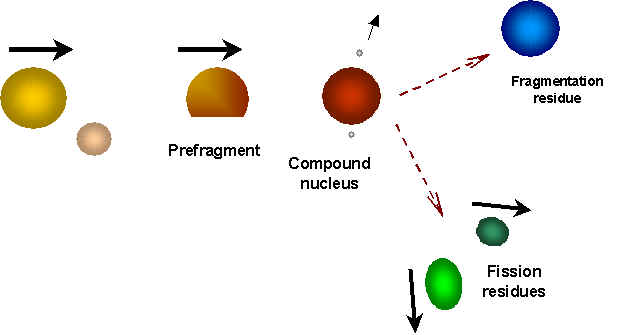|
GSI
FRS
AngMom
Thermometer
ProtRem
| |
Karl-Heinz Schmidt
Nuclear reaction studies of projectile fragmentation
in peripheral collisions
At
relativistic energies, heavy-ion reactions can be described as a
three-stage process:
 |
First,
the collision takes place leading to a excited prefragment. Due to high
kinetic energies involved, the
relative velocity of the reaction partners is large compared to the Fermi
velocity of the nucleons in the potential well. In addition, the associated
de-Broglie wavelength of the projectile is of the order of the size of the
nucleons. Thus, in the overlap zone between the projectile and the target
many nucleon-nucleon collisions take place, while the nucleons in the
non-overlapping region are only little disturbed.
Hence, the shape of the prefragment is almost not distorted
and the excitation energy is proportional to the lost mass. |
 |
In
the second stage, the thermal equilibrium in the intrinsic degrees of
freedom is established and the equilibrated compound nucleus is formed. |
 |
Finally,
the resulting equilibrated system decays in a competition between particle evaporation
(leading to fragmentation residues) and fission (leading to fission
residues).
|
A
scheme of these three stages is shown in figure 1.

Figure 1: Schematic view of peripheral heavy-ion collisions.
In the first stage, excited prefragment is formed, after the thermal equilibrium
is established a compound nucleus is formed, which then decay via particle
evaporation or fission.
Some
specific aspects of peripheral fragmentation reactions have
been studied in our group:
|